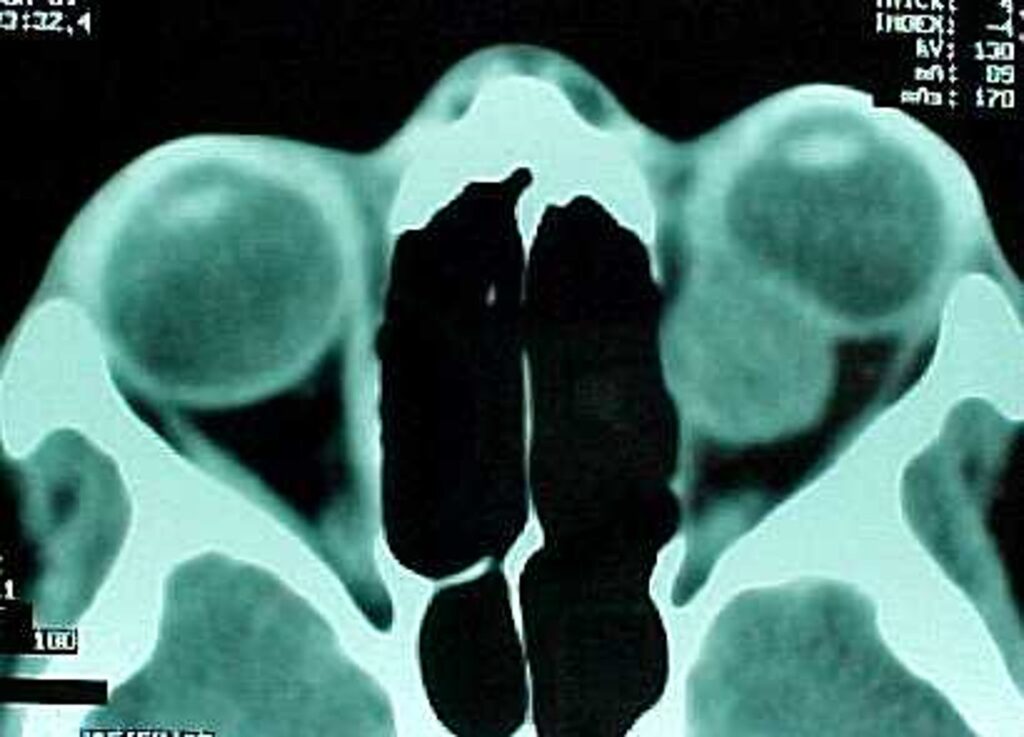
Are you noticing bulging eyes, vision changes, or pain around your eye? These could be signs of an orbital tumor. But don’t worry, this blog will guide you through everything you need to know about orbital tumors, from understanding what they are to getting the right treatment.
What are Orbital Tumors?
Imagine the bony socket that holds your eye – that’s your orbit. Orbital tumors are abnormal growths that develop within this space, affecting the muscles, nerves, and fat surrounding your eye. They can originate in the orbit or spread from nearby structures, such as the sinuses or brain.These tumors can be either benign (harmless) or malignant (cancerous).
Warning Signs: Spotting an Orbital Tumor Early
The key to effective treatment is catching an orbital tumor early. Here are some symptoms to watch out for:
- Bulging Eye (Proptosis): This is a tell-tale sign where your eye appears to be pushing forward.
- Vision Changes: Blurred or double vision, or even sudden vision loss.
- Pain and Discomfort: Feeling pain or pressure around your eye or in the eye socket.
- Restricted Eye Movement: Difficulty moving your eye in all directions.
- Swelling or Redness: Puffiness around your eye or eyelid, sometimes with redness.
Age-wise Orbital Tumors
Orbital tumors can occur at any age, but certain types are more common in specific age groups:
- Children: Hemangiomas and rhabdomyosarcomas are more prevalent.
- Adults: Meningiomas and lymphomas are more frequently seen.
- Elderly: Metastatic tumors are more likely in older adults.

Understanding these age-related patterns can help in early diagnosis and management.
Clinical Presentation of Orbital Tumors
The clinical presentation of orbital tumors varies depending on the type, size, and location of the tumor. Common clinical features include:
- Proptosis: Forward displacement of the eye.
- Strabismus: Misalignment of the eyes.
- Eyelid Abnormalities: Swelling, ptosis (drooping eyelid), or retraction.
- Optic Nerve Compression: Can lead to vision loss and abnormal pupil responses.
Getting a Clear Diagnosis
Early and accurate diagnosis of orbital tumors is essential for effective treatment. If you’re experiencing any of these symptoms, a doctor can use various tools to diagnose the issue:
- Checking Your History and Examining Your Eyes: The doctor will ask about your symptoms and take a close look at your eyes and the surrounding area.
- Imaging Techniques:
- CT Scan: Creates detailed cross-sectional pictures to show the size and location of the tumor.
- MRI Scan: Provides clear images of soft tissues, helping to identify the specific type of tumor.
- Ultrasound: Useful for examining the inside of your eye and detecting any masses.

- Biopsy: In some cases, a small tissue sample might be taken from the tumor and examined under a microscope for a definitive diagnosis.
Advanced Diagnostics for Better Accuracy
Medical advancements offer even more precise diagnostic tools:
- PET Scan: Helps identify tumors that have spread and assess their activity.
- Genetic Testing: Identifies specific gene mutations linked to certain tumors, allowing for personalized treatment plans.
Treatment Options: Tailored to Your Needs
The treatment for an orbital tumor depends on several factors, including the type, size, location, and whether it’s benign or malignant. Here’s a breakdown of the available options:
- Close Observation: Small, benign tumors that aren’t causing problems might be monitored regularly without immediate treatment.
- Medication Management: Steroids or chemotherapy drugs can help shrink specific tumors.
- Radiation Therapy: High-energy rays target and destroy cancer cells, often used for malignant tumors.
- Surgical Intervention: This is a common approach, especially for accessible tumors causing significant symptoms. Modern surgical techniques are becoming less invasive and more effective.
- Combination Therapy: Sometimes, a combination of treatments (surgery, radiation, and chemotherapy) might be used for the best outcome.
Advanced Management: The Cutting Edge of Treatment
Modern medicine offers exciting advancements in orbital tumor management:
- Minimally Invasive Surgery: Techniques like endoscopic surgery allow for faster recovery and fewer complications.
- Targeted Therapy: These drugs specifically target cancer cells, leaving healthy tissues unharmed.
- Immunotherapy: This approach helps your body’s immune system fight cancer cells more effectively.
Living with an Orbital Tumor: Support and Resources
An orbital tumor diagnosis can be overwhelming, but you’re not alone. Support groups, counseling services, and rehabilitation programs can provide emotional and practical assistance.
Conclusion
Orbital tumors, while potentially serious, can be effectively managed with early detection, accurate diagnosis, and appropriate treatment. Advances in medical technology and treatment options have significantly improved the prognosis for many patients. If you or someone you know is experiencing symptoms of an orbital tumor, seeking prompt medical attention is crucial for the best possible outcome.
References
- American Academy of Ophthalmology. (n.d.). Retrieved from AAO
- National Cancer Institute. (n.d.). Retrieved from NCI
- Mayo Clinic. (n.d.). Retrieved from Mayo Clinic
- Johns Hopkins Medicine. (n.d.). Retrieved from Johns Hopkins
- American Society of Clinical Oncology. (n.d.). Retrieved from ASCO


